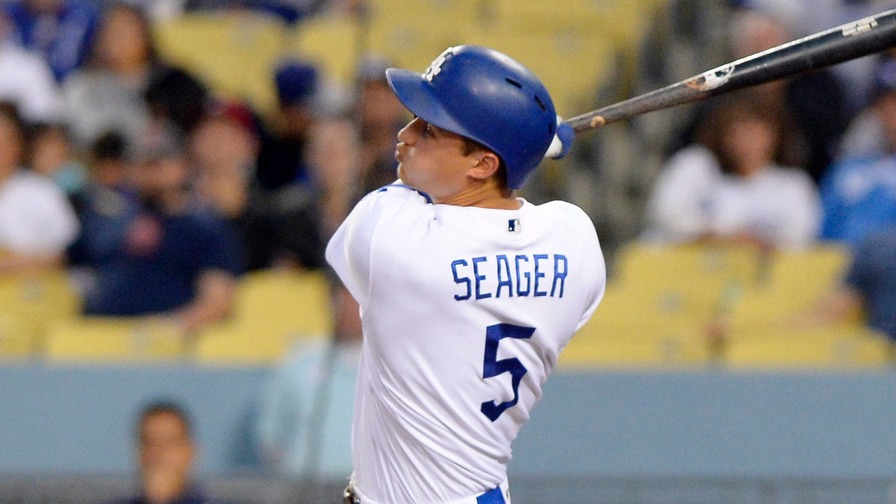Corey Seager's Recent Play Is a Glimpse of What's to Come

When a young pup like Corey Seager starts doing disgusting things on the baseball diamond, the immediate reflex is to call it a hot streak. It's fair to say that what he did Sunday -- launching a pair of dingers to score the only runs for the Los Angeles Dodgers on the night -- qualifies as disgusting.
The bright lights suit @coreyseager_5 just fine.
No. 1: https://t.co/Z9HbDN4N3t
No. 2: https://t.co/QXj1iV4Wp8 pic.twitter.com/lupCISTfYQ
— MLB GIFS (@MLBGIFs) May 16, 2016
One double-dong performance is good enough, but he also happened to have another long ball just one game before that.
.@coreyseager_5 joining the home run party. 💥https://t.co/XATw4oNKhN
— Los Angeles Dodgers (@Dodgers) May 15, 2016
Those three bombs gave Seager four total in a five-game span, upping his count to six for the season.
Frankly, I couldn't blame anyone if they said that Seager was riding a hot streak as he is just scorching at the plate, but there's one major issue with that assertion. Hot streaks end; Seager's reign of destruction is just beginning.
The Real Deal
Seager started the year off in a bit of a funk, batting .250/.311/.396 for the month of April with only two home runs. That got the streets talking about whether or not Seager's torrid start after his promotion last season was legit. Even when Seager was struggling, though, there were signs that he'd be just fine.
If Seager were truly struggling to get going, it likely would have shown up in his strikeout rate, but that never happened. He went down on strikes 15 times that month -- 14.2% of his plate appearances -- a mark that you would generally associate with a higher slash than what he had. His hard-hit rate was above average at 31.7%, and it showed that his slow start likely wasn't sustainable.
Then things started to normalize, and Seager unleashed pain on the whole league.
For the month of May, Seager is batting .370/.420/.717 with a 54.3% hard-hit rate and a 5.7% soft-hit rate. For perspective on those, the league-best marks in each category last year were 42.8% and 8.4% respectively. He was dusting dudes with no regard for human emotion.
Once we broaden the scope to the past 30 days, we'll once again see Seager near the top of the charts. His 48.8% hard-hit rate over the that span is the 2nd-best mark in the league, and his 8.8% soft-hit rate is 10th. With how quickly stats like this normalize, that's not some small-sample-size sauciness. It's just Seager showing how good he is.
If you count last year's numbers for Seager, we've got 269 total plate appearances in the big leagues to look at. Seager has started out his career with a 41.8% hard-hit rate, 15.3% soft-hit rate, and 16.7% strikeout rate. Over the past calendar year, there's only one batter who can duplicate those marks with a hard-hit rate of 40.0% or higher and soft-hit and strikeout rates below 17.0%. That's David Ortiz. Bryce Harper came close, but his 18.7% strikeout rate took him out of the running.
Looking at Seager through the lens of some of the more quickly-stabilizing statistics allows us to draw conclusions about his abilities before we have a reflective sample size for things such as wOBA and slugging percentage. And these peripheral stats are bowing at his feet right now.
It's still too soon to say that Seager is already one of the best hitters in the league. These batted-ball and plate-discipline stats are phenomenal, but it might be just a bit too soon to make such a bold declaration. But what we can do is conclude that this kid is no joke, and it's far too dismissive of his true talent level to say he's merely riding a hot streak.
Seager's not going to keep up the numbers he has posted so far in May, simply due to the fact that they are not of this world. Still, they further prove to us what his ceiling is when the results match the peripherals. We may not be ready just yet to call him one of the best, but if he keeps striking the ball the way he has while avoiding strikeouts, that time won't be far off.
















